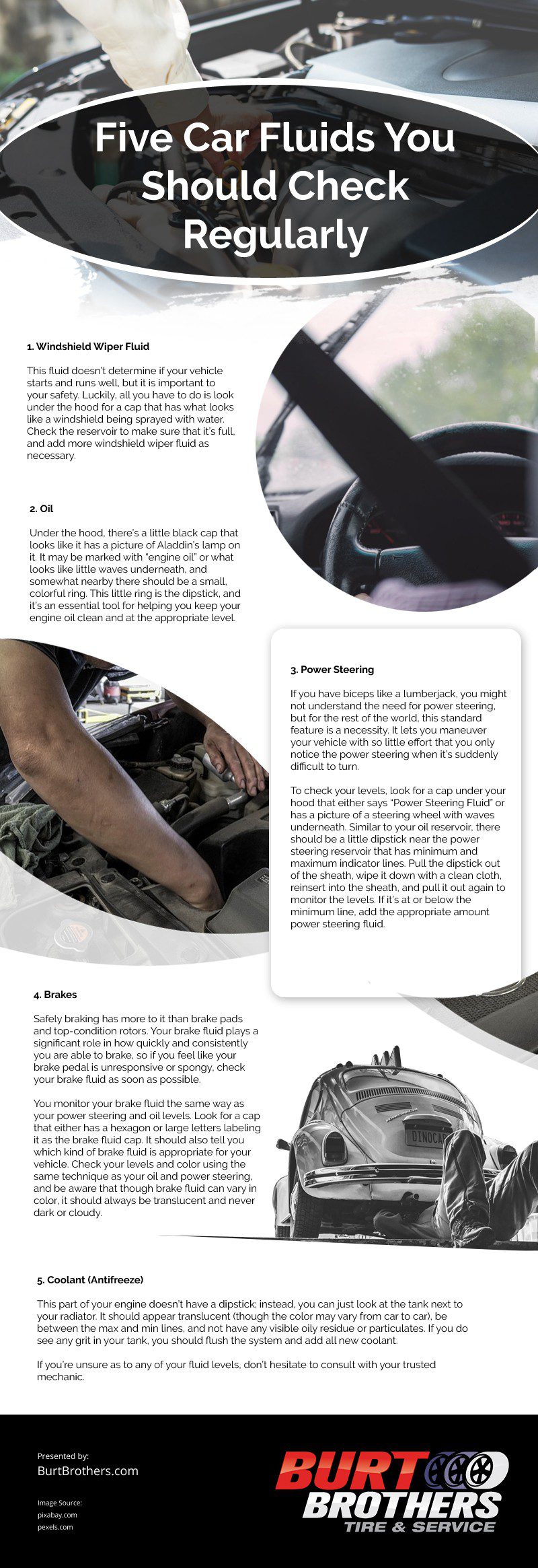
Car fluids are like the blood that keeps your automobile alive and running smoothly. If you fail to regularly check on them, they’ll eventually develop problems that will require expensive repairs. To keep your car in the best possible conditions make it a habit to regularly check the level of these 5 car fluids.
1. Engine Oil. This is the main lubricant and lifeblood of cars. Serious damage can occur at a very short amount of time if it is not taken care of regularly. The engine oil level can be checked under the hood in the little black cap with an Aladdin lamp mark or an engine oil label. There is also a small colorful ring nearby which is the dipstick (an essential tool that will help keep the engine oil clean and at an appropriate level.
2. Windshield Wiper Fluid. While this doesn’t affect whether your car starts and runs well, the windshield wiper fluid is important for your safety. To check for the fluid level, there is a cap under the hood with a picture of a windshield being sprayed with water. Just like how you would with other car fluids, check the reservoir and add more to make sure it is full.
3. Brake Fluid. To brake safely, one needs top-condition rotors and brake pads but most especially brake fluids. The secret to a quick and consistent brake is the brake fluid. Change your brake fluids regularly for a safe and effective brake system. Don’t wait for the brake pedal to become unresponsive and spongy. Monitor and check your brake fluid the same way as you do with power steering and oil. To check the levels, the brake fluid should always be translucent and never dark and cloudy despite the color variation.
4. Power Steering Fluid. The power steering is a standard feature that is necessary to run a car. It helps you maneuver the vehicle with little effect and once it is unexpectedly difficult to turn you need to check your levels. You can find a cap under the hood with the label ‘Power Steering Fluid’ or a logo of a steering wheel with waves underneath. You can check the level by pulling the dipstick out, wiping it down, and reinserting it into the sheath, then pulling it out. If the level is below the minimum line, add the correct amount of fluid.
5. Engine Coolant/Antifreeze. This car liquid is designed to transfer the heat created by the combustion cycle dispersing it to the cooling system. Regularly check the fluid level of the engine coolant, this part of your engine can be located by looking at the tank next to the radiator. The color might vary depending on the car but it should appear translucent between the max and min lines. There shouldn’t be any visible oil residue otherwise you need to flush the system and add new coolant. Unsure of the fluid levels for these car fluids? Make sure to consult with a trusted mechanic and get educated.
source: https://burtbrothers.com/blog/five-car-fluids-you-should-check-regularly/
Comments
Download this infographic.
